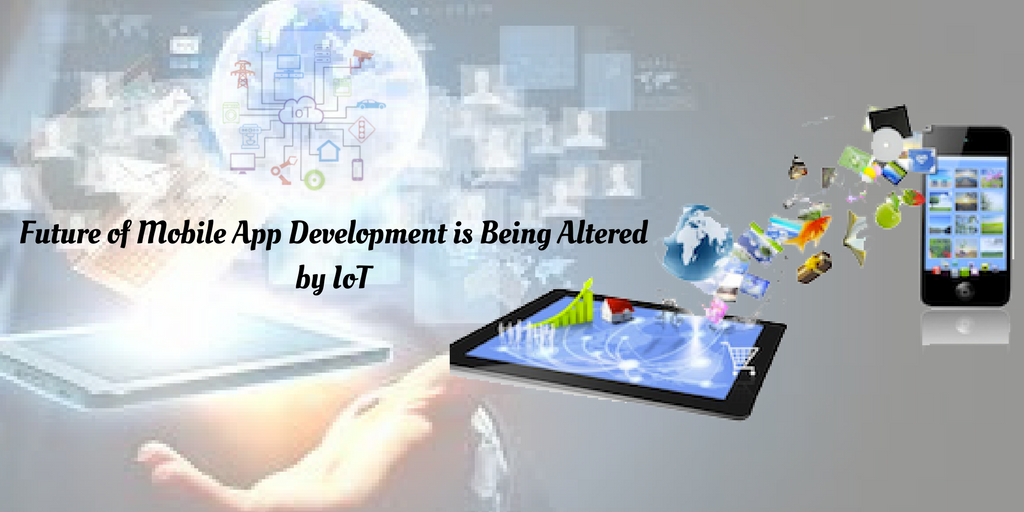Introduction:
With the advent of mobile application development technologies, the arena of mobile app implementations has gotten extended beyond mobile devices and connected services and APIs. For instance, the Internet of Things (IoT) reaches up to hardware, machines, and living bodies. It has made possible the devices connected to the Internet or mobiles and a network of other networks. Thus, mobile app development is getting hooked up with the introduction of IoT application development, and startup mobile application developers have to push their boundaries a bit more to gain an edge. To understand how mobile app development is getting hooked up with IoT application development, we should have a core idea of the IoT and IoT application development process from the perspective of a software developer.The Core Idea of IoT
As we have discussed earlier, the Internet of Things is a closed loop of different networks of connected devices, machines, and living things like humans. The non-computing hardware and things are connected with embedded software with the network/Internet and enable data capturing, data exchanges, and data storage within the network with complete visualization of data, data monitoring, and data analysis capabilities.Must Read: IoT Effects and Carries Massive Shift in Mobile App Development
The Core Idea of IoT Application Development
Earlier, it was believed that connecting non-computing devices to the Internet is electrical and electronic engineers’ job. With the introduction of development Boards like Arduino UNO, Particle (Spark Core), and Raspberry Pi, the scenario has been changed. The role of Development Boards is to simulate the motherboard functionality of a computer. It has input-output sockets, USB, power, and pinboard to add external components. On the board, a microcontroller chip processing and running the application code and communicating with inputs and outputs.
The chip is capable of reading sensor data and acts as a switch to operate the non-computing devices.
The role of Development Boards is to simulate the motherboard functionality of a computer. It has input-output sockets, USB, power, and pinboard to add external components. On the board, a microcontroller chip processing and running the application code and communicating with inputs and outputs.
The chip is capable of reading sensor data and acts as a switch to operate the non-computing devices.
IoT Hooks up Mobile Development
Several companies, including ThingWorx, Buglabs, Xively, and Carriots, provide essential components to enable IoT application development for the web and mobile interfaces. Moreover, these platforms allow the benefits of cloud services and big data processing to handle any amount of structured and unstructured data in real-time. Alex Jonsson at Evothings has first released the prototype application of the Internet of Things, and later on, others have connected IoT with native mobile applications using the native codes. Today, the mobile app development industry has tons of applications, formats, and protocols for mobile app developers to establish and maintain seamless connectivity with mobile devices and non-computing hardware/machines. Thus, mobile applications can connect homes, offices, rides, gadgets, and manufacturing workplaces in several ways. It makes all places, including cities, smart and automatically manageable.Security Threats in IoT with Mobiles
When the IoT applications are connected and operated or monitored by mobile devices, data theft or hacking becomes easy and proves low hanging fruits for malicious elements. It again poses challenges for the IoT mobile app developers to implement additional security measures to encrypt and secure all kinds of data exchanges on the IoT mobile application.Performance Concerns in IoT with Mobiles
IoT devices/sensors generate Big Data, and exchanging and processing voluminous data proves a performance hindrance for mobile devices. Therefore, mobile app developers working on IoT applications should learn how to develop mobile apps that can sustain in an IoT environment without performance glitches like hanging or crashing and deliver consistent user experiences even using cloud services if needed.Seamless Integration in IoT with Mobiles
With the advent of technologies, various APIs are available to connect devices seamlessly and make integration easy for applications, services, operations, and much more for IoT mobile app developers.Must Read: Must Know Trends in Mobile App Security – A Brief on Security ProtocolsSmartphones and tablets have tons of sensors and controllers as well as processors to integrate with IoT applications. In due course, mobile app developers have to go the extra mile and integrate them seamlessly for endless innovative applications such as smart home applications, smart cities, and smart transportation applications.
